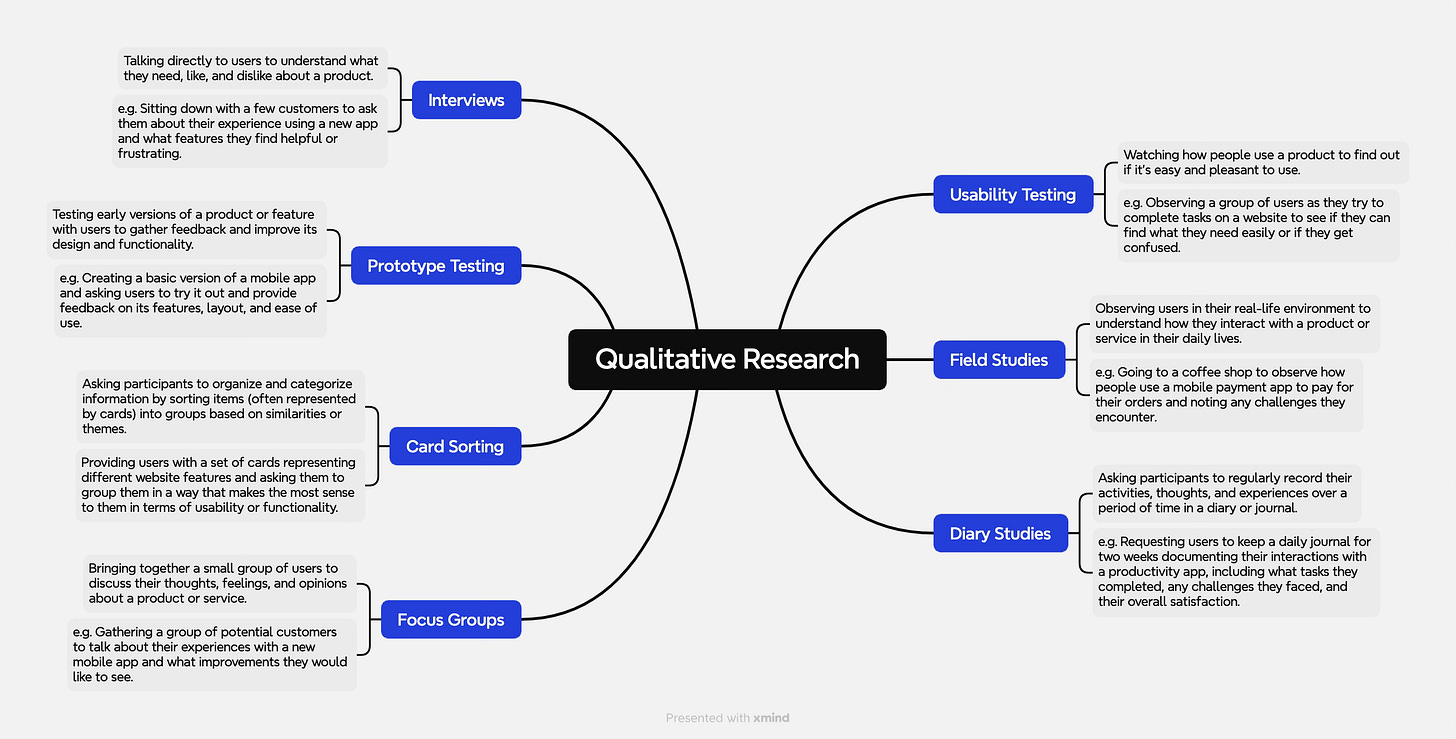User research part 2 #5
How many types of methods are there for user research? Let’s explore some essential ones in depth.
Recap Part 1
In the Part 1, we went through What is User Research, Why is User Research important, and How is User Research conducted?
Okay, let’s summarize some key notes:
User Research is essential for understanding user needs and enhancing product development by providing evidence-based solutions.
It improves usability, validates assumptions, informs decisions, and boosts product success by understanding user needs, enhancing user experience, and increasing ROI.
Conduct User Research by a plan involves defining goals, selecting methods, preparing materials, recruiting participants, collecting and analyzing data, and implementing insights to meet user expectations and drive business growth.
Check out Part 1 in-depth here.
Qualitative Research vs Quantitative Research
In the digital product world, there are many user research methods: Surveys and Questionnaires, Interviews, Focus Groups, Usability Testing, A/B Testing, Card Sorting, etc. It’s too complex to remember which method to apply and why, raising a lot of concerns. Therefore, I categorize them into two groups: Qualitative Research and Quantitative Research, based on their characteristics and use cases.
Qualitative Research
Aims to gain a deep understanding of user behaviors, motivations, and experiences. It explores the "why" and "how" behind user actions.
Qualitative Research involves open-ended, unstructured, or semi-structured data collection methods, such as interviews, focus groups, and field studies.
Qualitative Research typically uses smaller sample sizes due to the depth and detail of data collected.
Qualitative Research provides rich, detailed insights that help understand user motivations and experiences. It is useful for identifying problems and generating hypotheses.
Quantitative Research
Aims to gather numerical data to measure user behaviors and validate hypotheses. It answers "what," "how many," and "how often" questions.
Quantitative Research involves structured data collection methods, such as surveys with closed-ended questions, analytics tools, and A/B testing.
Quantitative Research requires larger sample sizes to ensure statistical significance and generalizability.
Quantitative Research: Provides measurable and comparable data that can be used to validate hypotheses and quantify user behaviors.
Essential User Research methods
Let’s categorize User Research methods into 2 groups: Qualitative Research and Quantitative Research.
Summary
Both qualitative and quantitative research methods are essential for a comprehensive understanding of user needs and behaviors. Qualitative research provides depth and context, uncovering the reasons behind user actions and experiences. Quantitative research offers breadth and generalizability, allowing for the measurement and validation of patterns and trends across larger user populations.
You should often use a combination of both types of research to inform product development, ensuring that decisions are based on both rich insights and solid data.
Thanks for reading my article! Your feedback is invaluable to me, so please feel free to share your thoughts and ideas.




